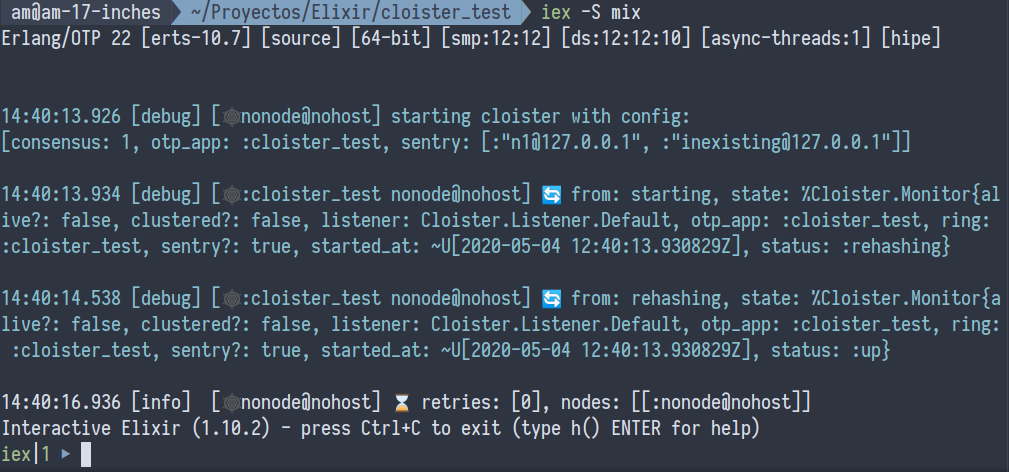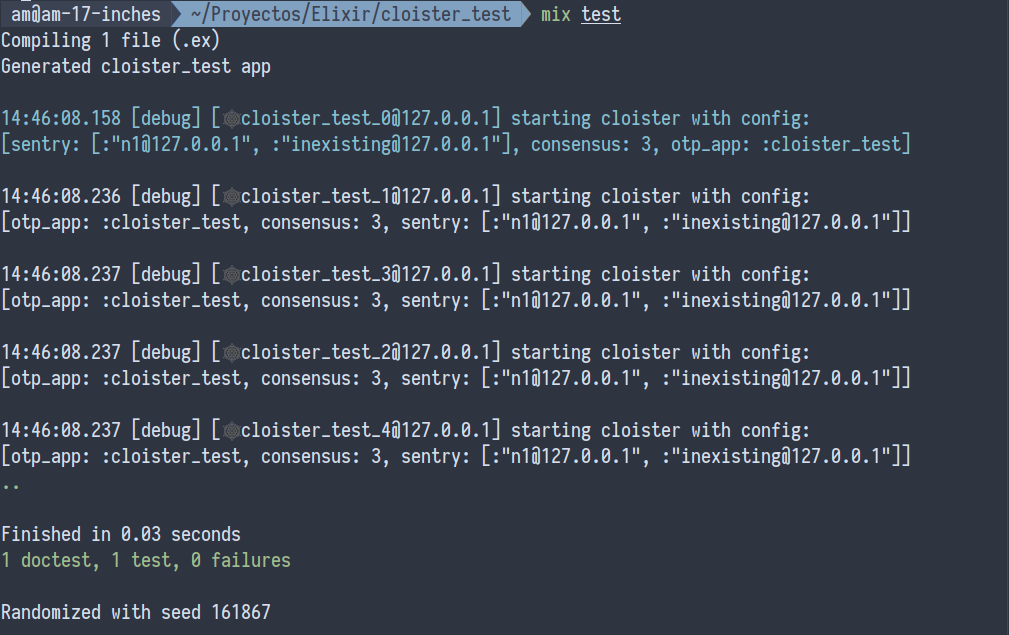View Source Docker Friendly
Cloister is being developed with the drop-in support of Docker. Distributed Erlang is a charm to work with unless your DevOps team is engaged in containerizing the whole universe. They usually have many cryptic arguments full of words you as an old-school software engineer would barely understand, and sooner or later you are faced with a fact that now we run everything in a dockerized environment, which means no one can guarantee your application has an IP/DNS, or would not have automatically restarted depending on the current moon phase.
I am exaggerating a bit, but this is it: you cannot prepare the release hardcoding longnames in vm.args and/or env.sh anymore. You should be ready to handle spontaneous restarts of containers (and therefore your ErlangVM instances) gracefully. And you are probably still in a need to test it locally, as well as in containerized environment.
That is where cloister might step into to help. It takes care about the cluster handling, based on either the list of node names (IP/DNS, old school,) or a service name exposed by docker. It uses Application.start_phase/3 to ensure the cluster is started before letting the boot process to continue. It also provides a callback when the topology of the cluster changes (new node added, node shut down, etc.)
Dev Environment, no Docker
All one needs to start playing with cloister is to add a dependency to mix.exs file and put some config:
config :cloister,
otp_app: :cloister_test,
sentry: ~w|node1@127.0.0.1 node2@127.0.0.1|a,
consensus: 1That config would instruct Cloister to use :cloister_test as the main OTP app and the name of the HashRing behind. It would expect nodes :"node1@127.0.0.1" and :"node2@127.0.0.1" to exist and it’ll try to connect to them, but as soon as it sees itself, and consensus parameter is set to 1, it won’t worry about others and report the successful cluster assembly.

Test Environment, no Docker
To test the distributed environment outside of Docker, one might use test_cluster_task package that effectively starts the distributed environment before running tests. To use it, simply add {:test_cluster_task, "~> 0.3"} to the dependencies list of your application and use mix test.cluster or set the alias in mix.exs project:
def project do
[
...,
aliases: [test: ["test.cluster"]]
]
end
Releases for Docker Environment
OK, now it’s time to add Docker to the equation. Cloister is smart enough to distinguish the list of node vs. the service name when passed to :sentry config option. When it’s an atom, Cloister will shut down the :net_kernel application and restart it in distributed mode. For that to work, one must explicitly specify export RELEASE_DISTRIBUTION=none in rel/env.sh.eex file for releases.
Our config would now look like:
config :cloister,
otp_app: :cloister_test,
sentry: :"cloister_test.local",
consensus: 3Here, :"cloister_test.local" is the name of service to be used for nodes discovery and at least three nodes up would be expected for it to pass the warming phase. The application startup chain would be blocked until at least three nodes are up and connected.
We would also need a Dockerfile which is the typical one, built from elixir:$ELIXIR_VERSION and with epmd -d explicitly started before the application itself. Also we’d need docker-compose.yml, declaring the service like below.
version: '3.1'
services:
cloister_test:
build: .
networks:
local:
aliases:
- cloister_test.local
environment:
- CLOISTER_TEST_CLUSTER_ADDRESS=cloister_test.local
networks:
local:
driver: bridgeOnce done, one might build the composed image and start it with three instances of the application:
docker-compose build
docker-compose up --scale cloister_test=3 --remove-orphans
After some debug info, it’d spit out:

All three instances are up and connected, ready to perform their work.
Tips and Tweaks
Cloister relies mainly on configuration because it’s started as a separate application before the main OTP application that uses it and relies on startup phases to block until the consensus is reached. For the very fine tuning, one might put :cloister into :included_applications and embed Cloister.Manager manually into the supervision tree. See Cloister.Application.start_phase/3 for the inspiration on how to wait till consensus is reached.
Also, one might start and manage HashRing on their own by setting :ring option in config. Cloister would expect the ring to be started and handled by the consumer application.
The whole configuration is described on Configuration page.